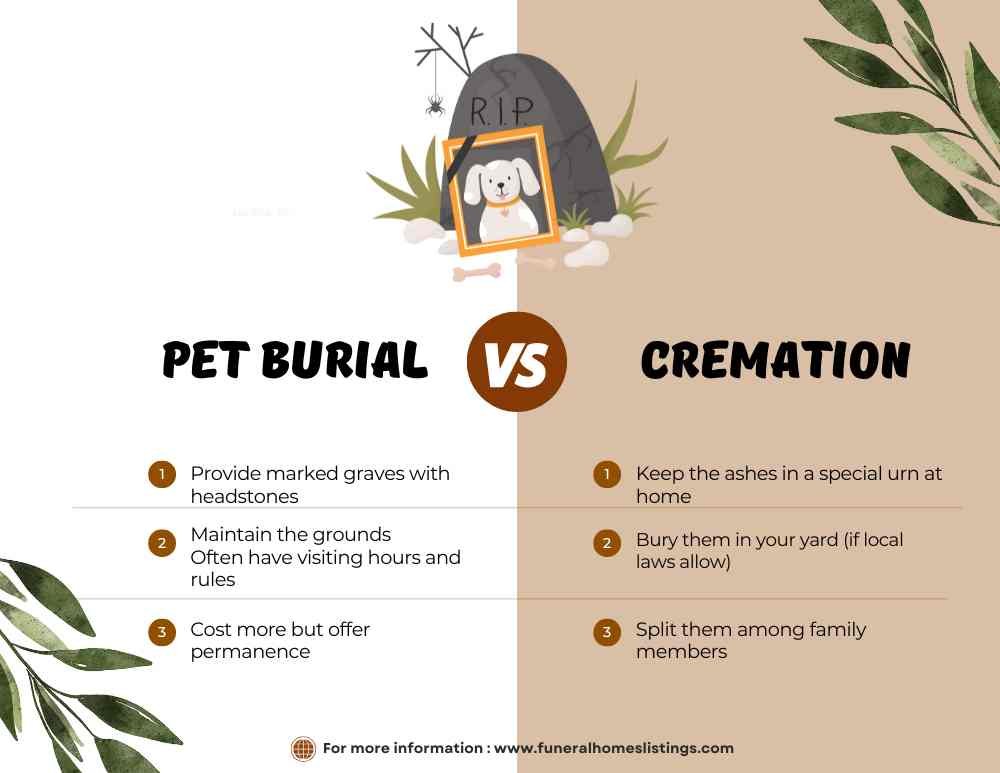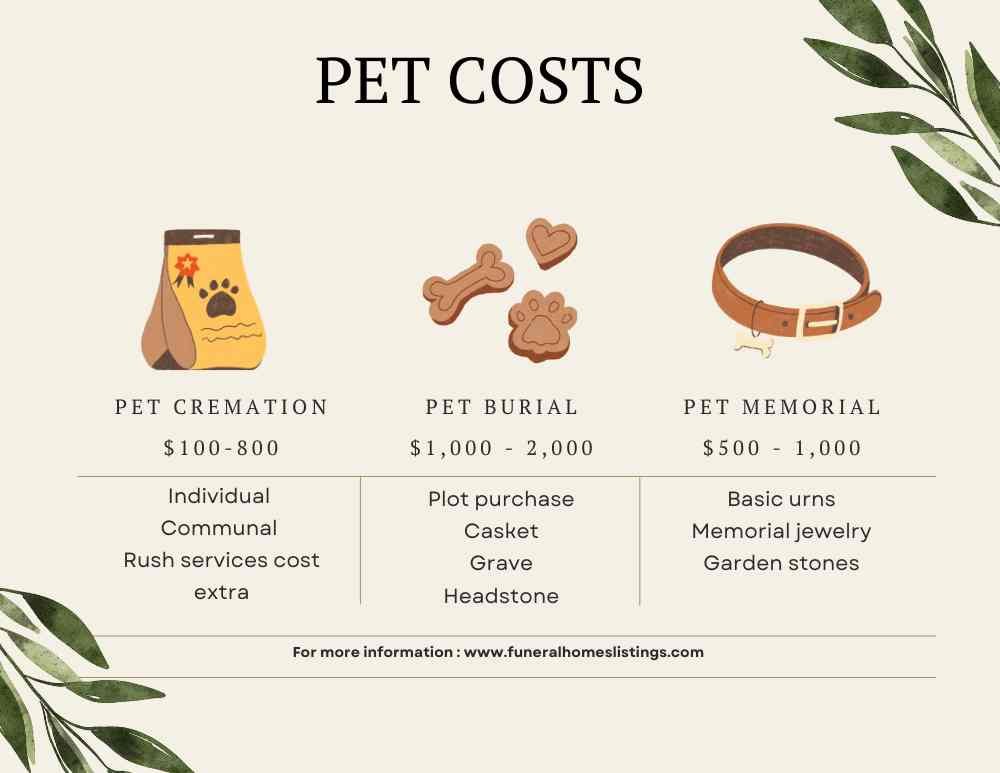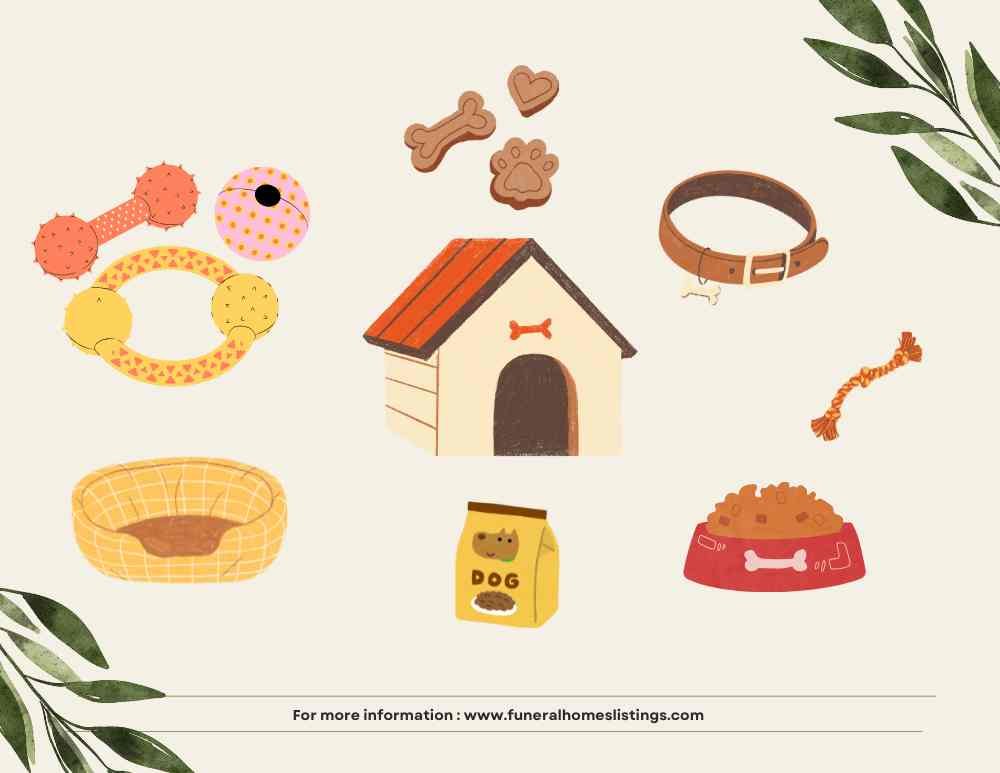Losing a pet hurts deeply. Your grief is a reflection of the deep love you both knew. Don’t feel like you have to figure this out alone. Take your time and know that however you choose to honor your pet, there’s no wrong way to say goodbye.
This guide helps you navigate pet funeral and memorial options, from cremation and burial to heartfelt ways to honor your companion’s life. You’ll find clear advice on costs, choosing the right provider, and coping with loss—plus thoughtful ways to help children understand pet death.
Why Saying Goodbye to Your Pet Matters
Your pet was family. The love they gave you was real, and the pain you feel now is just as real.
Creating a farewell, whether a simple goodbye at home or a formal pet memorial service, helps in ways you might not expect.
- It gives you a chance to say what you need to say
- It helps children understand what happened
- It lets family and friends support each other
- It honors the joy your pet brought to your life
- It can bring a sense of closure during this painful time
Understanding Your Options When Your Pet Dies

When your pet passes away, you’ll need to decide what happens next. This decision doesn’t have to be rushed, and there’s no “right” choice.
Pet Cremation: Flexible and Personal
Pet cremation gives you options for how to remember your companion. The process uses high heat to reduce your pet’s body to ashes, which you can then keep, scatter, or bury.
Two main types:
Individual cremation means your pet is cremated alone. You get their ashes back in an urn or container. This costs more but lets you keep your pet’s remains.
Communal cremation means several pets are cremated together. The ashes get scattered by the crematory, and you don’t get them back. This costs less but doesn’t give you physical remains.
With individual cremation, you can:
- Keep the ashes in a special urn at home
- Scatter them in your pet’s favorite spot
- Bury them in your yard (if local laws allow)
- Split them among family members
The flexibility makes pet cremation popular with many families. Learn more about pet cremation vs. pet burial to compare your options.
Pet Burial: A Permanent Resting Place
Pet burial means putting your pet’s body in the ground. This gives you a specific place to visit and remember them.
Pet cemetery burial happens at a dedicated pet cemetery. These places:
- Provide marked graves with headstones
- Maintain the grounds
- Often have visiting hours and rules
- Cost more but offer permanence
At-home burial might be possible in your own yard, but you need to check local laws first. Many cities and counties have rules about:
- How deep the grave must be
- Distance from water sources
- Property size requirements
- Whether it’s allowed at all
Before choosing home burial, research your local regulations. Some areas don’t allow it, and you might face problems if you move later.
Need help finding a location? Search for a pet cemetery near you and compare price and options.
Pet Memorial Service: Celebrating Their Life
A pet memorial service focuses on remembering the good times and the love you shared. You can hold one whether you choose cremation, burial, or another option.
Simple memorial ideas:
- Gather family at home to share favorite memories
- Have friends over to look at photos and tell stories
- Hold a small ceremony in your pet’s favorite outdoor spot
- Light a candle and take turns saying what you’ll miss most
More formal celebration of life for pets might include:
- Renting a space for larger gatherings
- Creating a memory board with photos
- Playing your pet’s favorite music
- Sharing a meal while telling stories
- Inviting other pet owners who knew your companion
The memorial can happen with or without your pet’s body present. Some families have a service before burial, others after cremation, and some do both.
For step-by-step help organizing a meaningful service, read our guide on Planning a Pet Memorial Service or Celebration of Life.
What Pet Funeral Costs Look Like

Pet funeral costs vary widely based on what you choose. While you’re grieving, dealing with money feels awful, but knowing what to expect helps you make decisions without financial surprises.
Typical Price Ranges
Pet cremation costs:
- Individual cremation: $100-$400 for small pets, $300-$800 for large dogs
- Communal cremation: $30-$150 depending on pet size
- Rush services usually cost extra
Pet cemetery burial:
- Plot purchase: $400-$1,000
- Casket: $50-$500
- Opening/closing grave: $200-$500
- Headstone: $200-$2,000
Additional services:
- Pickup from home or vet: $50-$150
- Viewing before cremation: $100-$300
- Expedited services: 25-50% extra
Pet urns and memorials:
- Basic urns: $25-$100
- Custom urns: $100-$500
- Memorial jewelry: $50-$300
- Garden stones: $30-$200
Factors That Affect Cost
Several things influence how much you’ll pay:
Pet size – Larger pets cost more for cremation and burial because they require more resources.
Location – Urban areas typically cost more than rural areas.
Services chosen – Individual cremation costs more than communal. Private viewings add to the bill.
Timing – Rush services or weekend arrangements often have extra fees.
Provider type – Veterinary clinics, pet funeral homes, and independent crematories have different pricing.
TIP:Don’t feel pressured to spend more than you can afford. Your love for your pet isn’t measured by how much you spend. A simple cremation with a heartfelt home memorial can be just as meaningful as expensive options.Get detailed cost breakdowns and financing options in our Pet Funeral Costs & Financing: What to Expect guide.
Finding the Right Pet Cemetery or Crematory
Choosing someone to care for your pet’s remains feels overwhelming when you’re hurting. But finding a compassionate provider who treats your companion with dignity makes a big difference.
What to Look for in a Provider
Compassion and understanding – Do they acknowledge your grief? Do they give you time to ask questions without rushing you?
Clear communication – Can they explain their process in terms you understand? Do they return calls promptly?
Transparency about pricing – Will they provide written estimates? Do they explain all fees upfront?
Facility cleanliness – If you visit, does the place look clean and well-maintained?
Reviews and reputation – What do other pet owners say about their experience?
Questions to Ask Potential Providers
When you call pet funeral service providers, ask:
- Can you explain your cremation/burial process?
- How do you ensure i get my pet’s ashes back (for individual cremation)?
- What’s included in your quoted price?
- Are there any additional fees i should know about?
- How long does the process take?
- Can i visit the facility?
- Do you offer payment plans?
Trust your instincts. If someone makes you feel rushed or uncomfortable, look elsewhere. Good providers understand you’re making decisions during a difficult time.
Dealing with Pet Loss Grief
Pet loss grief hits hard. Don’t let anyone tell you “it was just a pet”, your pain is real and valid.
What Grief Looks Like
Everyone grieves differently, but common reactions include:
Physical symptoms:
- Trouble sleeping or sleeping too much
- Changes in appetite
- Fatigue or restlessness
- Tightness in chest or throat
Emotional responses:
- Intense sadness or emptiness
- Anger at the situation or even your pet
- Guilt about decisions you made
- Relief (especially after a long illness)
Social changes:
- Avoiding places that remind you of your pet
- Not wanting to talk to people
- Feeling like others don’t understand
- Isolating yourself from activities
All of these reactions are normal. Grief doesn’t follow a timeline, and there’s no “right” way to feel.
Taking Care of Yourself
While you’re grieving:
Give yourself permission to feel sad. Don’t try to “get over it” quickly or pretend you’re fine.
Keep routines when possible. Basic self-care like eating and sleeping helps your body cope.
Talk to people who understand. Pet loss support groups, online forums, or friends who’ve lost pets can help.
Consider professional help if grief interferes with daily life for weeks or months.
Be patient with yourself. Some days will be harder than others, and that’s okay.
For more support and coping strategies, read Coping with Pet Loss: A Guide to Grief and Healing.
You can also find resources in our Grief Support & Resources: Coping with Loss and Finding Healing guide.
Helping Children Understand Pet Death
Explaining pet death to children requires honesty, patience, and age-appropriate language. Kids often have their first experience with death through losing a pet.
What to Say (and What Not to Say)
Be honest and direct:
- “Buddy died today. His body stopped working and he can’t come back.”
- “When pets get very old or sick, sometimes their bodies can’t keep going.”
- “Dying means Buddy’s body stopped working, but we’ll always remember how much we loved him.”
Avoid confusing phrases like:
- “We put him to sleep” (might make kids afraid of bedtime)
- “He went away” (might make them think the pet will return)
- “God needed another angel” (might make them angry at God)
Supporting Kids Through Pet Grief
Let them express feelings. Kids might cry, get angry, or act out. All reactions are normal.
Include them in decisions when appropriate. Older children can help choose urns or plan memorials.
Keep routines as normal as possible. School, meals, and bedtime routines provide stability.
Answer questions honestly. Kids often ask the same questions repeatedly as they process the loss.
Consider getting them involved in memorialization like planting a flower or making art about their pet.
Explaining Pet Loss to Children: A Compassionate Guide offers more detailed strategies for different age groups.
Honoring Your Pet’s Memory

Creating lasting tributes helps keep your pet’s memory alive and can bring comfort during difficult times. There’s no timeline for when you should do this but some people want immediate memorials, others prefer to wait.
Popular Pet Memorialization Ideas
Pet urns give you a beautiful way to keep your companion’s ashes at home. Options include:
- Traditional urns made from wood, ceramic, or metal
- Photo urns that display your pet’s picture
- Biodegradable urns for eventual burial
- Keepsake urns that hold small portions of ashes
Memorial jewelry lets you carry your pet with you:
- Pendants that hold a small amount of ashes
- Bracelets with your pet’s name engraved
- Rings with paw print impressions
- Lockets containing a photo or small amount of fur
Garden memorials create peaceful outdoor spaces:
- Engraved stones with your pet’s name and dates
- Memorial trees or plants
- Garden benches with plaques
- Special flower beds in their favorite outdoor spots
Charitable giving honors your pet while helping other animals:
- Donations to animal shelters in your pet’s name
- Sponsoring another pet’s medical care
- Contributing to animal rescue organizations
- Funding spay/neuter programs
Creative Memorial Ideas
Memory books compile photos, stories, and mementos from your pet’s life.
Custom art includes portraits, paw print impressions in clay, or nose print keepsakes.
Digital memorials like social media pages or online pet memorial websites.
Experience memorials such as visiting places your pet loved or volunteering at animal shelters.
Explore more creative options like pet urns, memorials, and keepsakes to honor your companion.
Making Difficult Decisions About Euthanasia
Sometimes pet funeral & memorial services follow the difficult decision to help your pet pass peacefully through euthanasia. This adds another layer of grief and decision-making to an already painful time.
When Facing End-of-Life Decisions
If your pet is suffering from illness or injury, you might need to consider:
Quality of life factors:
- Can they eat, drink, and use the bathroom normally?
- Are they in constant pain despite medication?
- Do they still enjoy activities they used to love?
- Are more bad days than good days?
Veterinary guidance helps you understand your pet’s condition and prognosis.
Family discussions ensure everyone understands the situation and feels heard.
Planning Around Euthanasia
If you choose euthanasia, you can still plan meaningful ways to say goodbye:
Before the procedure:
- Spend special time with your pet at home
- Take final photos or videos
- Let them enjoy favorite foods or activities if possible
- Have family members say individual goodbyes
During the procedure:
- Choose whether to be present (this is personal – there’s no right choice)
- Bring comfort items like their favorite blanket
- Consider having it done at home if available
After the procedure:
- Decide immediately about remains (cremation vs burial)
- Plan memorial activities for the following days
- Consider taking paw print impressions or fur clippings
The guilt and second-guessing that often follow euthanasia decisions are normal parts of grief. Most pet owners who choose this path do so out of love, wanting to prevent further suffering.
Moving Forward After Pet Loss
Healing from pet loss takes time, and everyone’s journey looks different. There’s no set timeline for when you should “feel better” or be ready for certain steps.
When You’re Ready
Some people know immediately they want another pet. Others need months or years. Both approaches are valid.
Signs you might be ready for another pet:
- You can think about your lost pet without overwhelming sadness
- You’re excited about the idea of loving another animal
- Your living situation and finances support pet ownership
- You want a pet for the right reasons (not just to fill the void)
It’s okay if you’re not ready when:
- The grief still feels too raw
- You feel like it would be “replacing” your pet
- Your life circumstances have changed
- You need more time to heal
Keeping Their Memory Alive
Your pet’s death doesn’t end their impact on your life. Many people find comfort in:
- Talking about their pet with friends and family
- Looking at photos and videos when it feels good (not when it hurts)
- Continuing traditions like donating to animal causes
- Sharing stories about their pet with others
- Including their memory in holiday celebrations or family events
Finding Support in Your Community
You don’t have to navigate pet loss alone. Many communities offer resources specifically for people grieving pets.
Local support options might include:
- Pet loss support groups at veterinary clinics
- Counselors who specialize in pet grief
- Religious communities that acknowledge pet loss
- Online forums for people in your area
National resources offer:
- Pet loss hotlines staffed by trained volunteers
- Online support groups and chat rooms
- Educational materials about pet grief
- Professional referrals for counseling
Taking the Next Steps
When you’re ready to make arrangements for your pet, remember that this is your decision. Don’t let anyone pressure you into spending more than you’re comfortable with or choosing options that don’t feel right.
Immediate steps:
- Contact your veterinarian about your options
- Research local pet funeral service providers
- Decide between cremation and burial based on your family’s needs
- Consider what type of memorial feels meaningful
Longer-term planning:
- Think about how you want to honor your pet’s memory
- Plan support for family members, especially children
- Consider whether you want to create lasting memorials
- Give yourself permission to grieve at your own pace
Your pet brought joy, love, and companionship to your life. However you choose to say goodbye and honor their memory is the right choice for you.
The pain you feel now is a reflection of the love you shared. While the hurt may never completely go away, it will become more manageable, and you’ll be able to focus more on the happy memories you made together.
Take care of yourself during this difficult time, and know that your pet was lucky to have someone who loved them as much as you did.
Claire brings over 15 years of experience in end-of-life planning and funeral coordination. Before joining FuneralHomesListings.com, she worked directly with hundreds of families across the Midwest, helping them navigate difficult decisions with clarity and care. Her mission is to simplify the funeral planning process so families can focus on what matters most—honoring their loved ones.
Comments